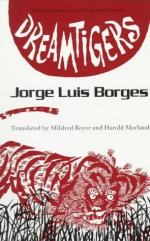|
This section contains 5,434 words (approx. 19 pages at 300 words per page) |

|
SOURCE: “Borges: Tradition and the Avant-Garde,” in Borges Studies on Line. J. L. Borges Center for Studies & Documentation. January 13, 2000, pp. 1–15.
In the following essay, Sarlo links the avant-garde movement in the Argentina of the 1920's, in which Borges participated, with the literary movement to define Argentine national tradition and local color.
I. the Problem
In 1924, the avant-gardist literary journal Martín Fierro appeared in Buenos Aires. Its name was a very obvious tribute to the gauchesque poem written by José Hernández in 1872, one of the key texts, together with Facundo by Sarmiento, to which Argentine writers could turn if the question of literary tradition was raised. But why would literary tradition absorb the young writers that launched the journal to proclaim their battle-cry against modernist poets1 such as Leopoldo Lugones, nationalist intellectuals such as Ricardo Rojas, the market-oriented realist novels by Manuel Gálvez, and the so-called...
|
This section contains 5,434 words (approx. 19 pages at 300 words per page) |

|


